Photos show 13 iconic landmarks as they were being constructed
Zoë Miller,Melissa Wells,Talia Lakritz
- Building landmarks like the Statue of Liberty involved huge feats of engineering.
- It took 14 years for the Sydney Opera House to be completed.
We know what famous landmarks look like today, but iconic structures like the Statue of Liberty and the Sydney Opera House looked a bit different while they were being assembled.
While it only took a handful of months for Argentinians to erect the 221-foot Obelisco de Buenos Aires, which was built in 1936 to commemorate the 400th anniversary of the city's founding, other famous landmarks took longer.
The Sydney Opera House — whose iconic "shells" are covered in one million tiles and were built using cranes designed for the job — took 14 years and AU$ 102 million to complete, just in time for Queen Elizabeth II's visit to Australia in 1973.
Meanwhile, Antoni Gaudí's famous Sagrada Família in Barcelona, Spain, which features 18 ornate towers, stained-glass windows, and numerous ruled surfaces, has been a work in progress since 1882.
Here are photos that show the construction of monuments in cities around the world — and the end result.
The construction of the Eiffel Tower began in Paris in 1887, in advance of the 1889 World's Fair.

Gustave Eiffel's tower, which was actually designed by his senior engineers Maurice Koechlin and Emile Nouguier, is comprised of 18,000 pieces of wrought iron and cost $1.5 million to complete, or about $44 million today, Inc. reported in 2022.
When it was built, the Eiffel Tower — which measures 1,063 feet — was the tallest building in the world.
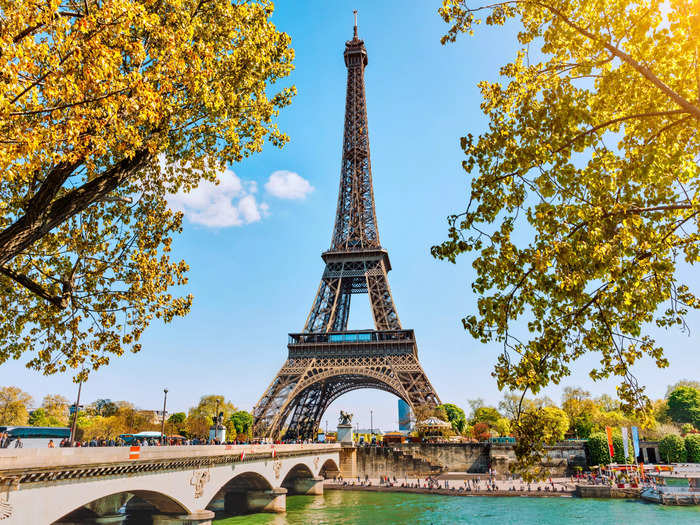
Although it was meant to be a temporary structure — and would have been knocked down in 1909 if city officials hadn't realized its potential as a radiotelegraph station — la Tour Eiffel is now one of the most recognizable monuments in the world.
Today, the world's tallest building is the Burj Khalifa in Dubai.
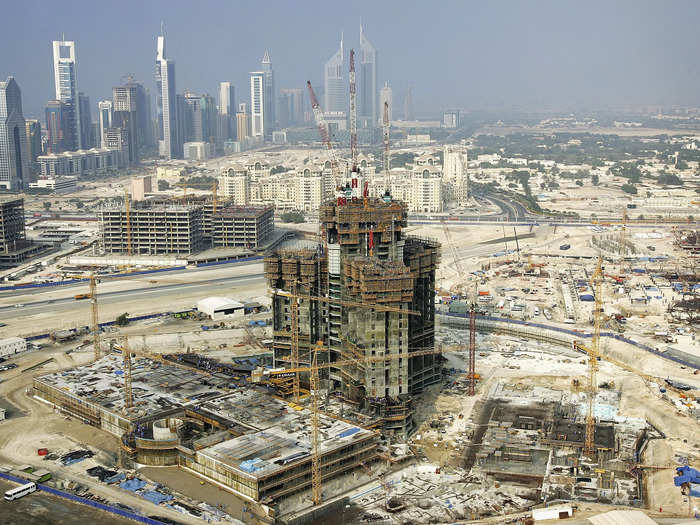
Measuring 2,716.5 feet tall, the Burj Khalifa — completed in 2009 after five years of construction — is almost triple the height of the Eiffel Tower.
It's also currently the tallest free-standing structure of any kind.
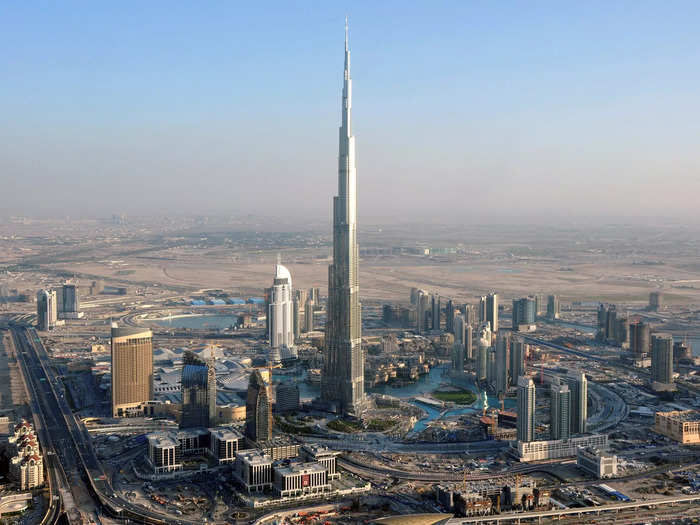
In addition to being the world's tallest building, the Burj has broken several other architectural records: It's the tallest structure and the tallest free-standing structure, honors that used to respectively belong to the KVLY-TV mast in Blanchard, North Dakota, and the CN Tower in Toronto, Canada.
According to Guinness World Records, the Burj can also claim the records for the tallest elevator in the world, the most floors in a building, and the highest restaurant from ground level.
The Statue of Liberty, erected in 1886, was a gift from France. The parts were made in Paris before they were shipped to the US.
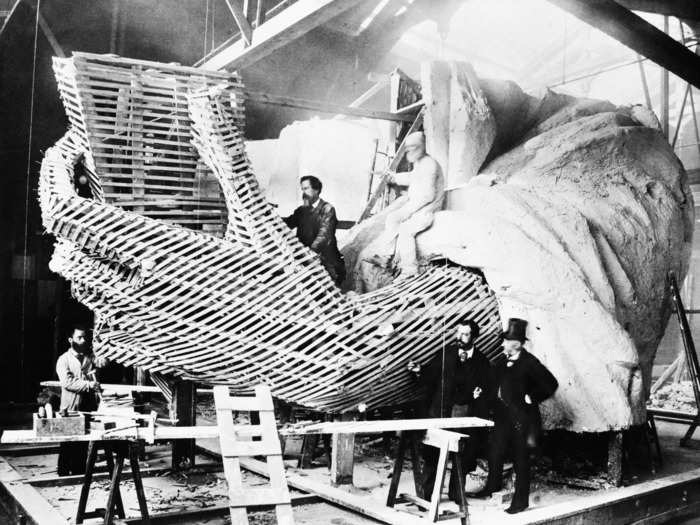
Gustave Eiffel designed the monument's frame and Edouard de Laboulaye, a French political thinker and abolitionist, was behind the statue's construction, according to the National Park Service. He proposed building a statue commemorating the United States' commitment to freedom and democracy.
Lady Liberty was sculpted by Frederic Auguste Bartholdi, who modeled her face on his mother's.
The statue, which measures 305 feet from her toe to her torch, was the tallest iron structure ever built when she was completed.
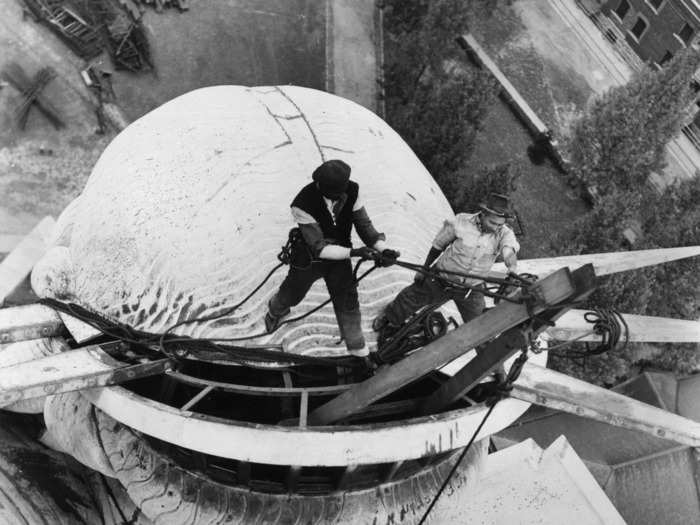
After it was built in France, the statue was disassembled and shipped in pieces to the US. Once the pedestal was complete, the statue was swiftly reassembled and unveiled in 1886.
The statue, which is on Liberty Island in New York Harbor, stands as a symbol of freedom.
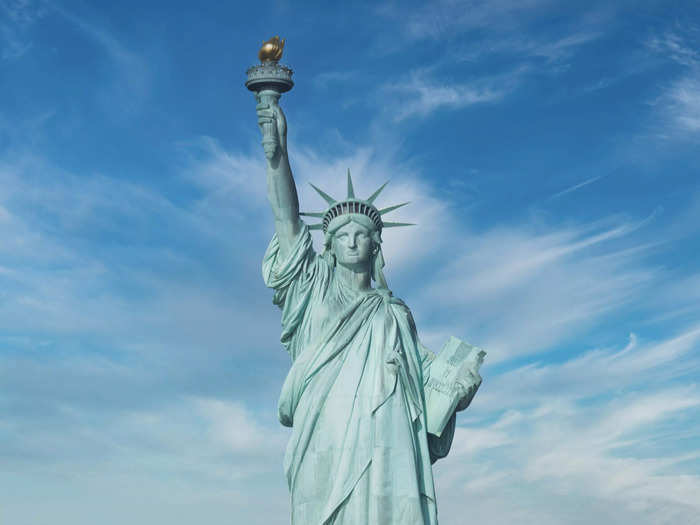
For her centennial in 1986, Lady Liberty was outfitted with a new torch covered in thin sheets of 24K gold.
The construction of the Sydney Opera House, which was completed in 1973, took 14 years and involved 10,000 workers.
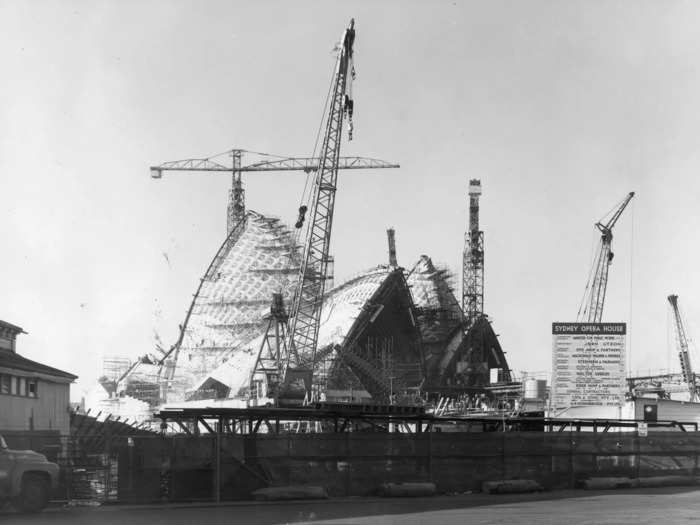
The modern expressionist design of the Sydney Opera House was the product of an international design competition. Its iconic concrete "shells" are covered in one million tiles and were built using cranes made specifically for the job, The Telegraph reported in 2013. The winner, Danish architect Jørn Utzon, was one of 233 applicants.
The first person to perform at the opera house was African American bass-baritone Paul Robeson, who climbed the scaffolding of the incomplete structure in 1960 and sang "Ol' Man River" to construction workers, The Sydney Morning Herald reported in 2017.
But it was Queen Elizabeth II who formally opened the building in 1973. Her Majesty made four subsequent visits.
In 2007, the opera house was declared a UNESCO World Heritage site.
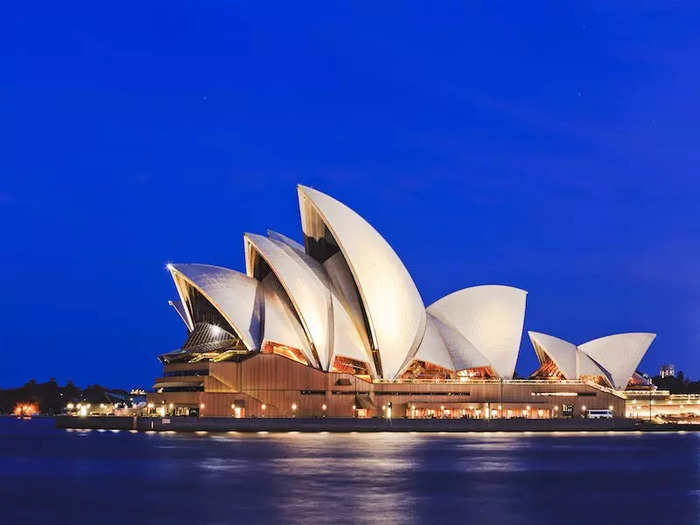
Every year, more than 10.9 million people visit the multi-venue performing arts center, which includes six separate performance spaces, according to its official website.
The Golden Gate Bridge, completed in 1937, was designed to connect northern California to the San Francisco Peninsula.
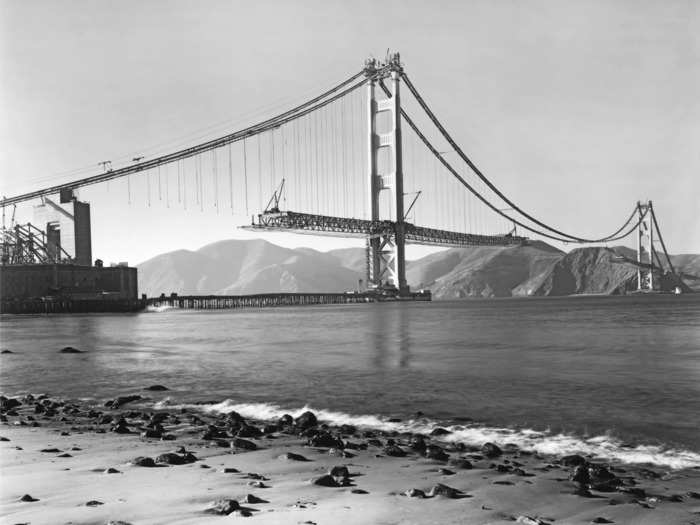
Although it was first proposed by a railroad executive in 1872, the idea for a bridge connecting northern California and the San Francisco Peninsula wasn't taken seriously until 1916. That was when structural engineer and newspaper editor James H. Wilkins finally convinced fellow engineer Michael O'Shaughnessy that such a bridge could become a reality.
Once the United States War Department approved the project, construction began in 1933. It took four years to complete the bridge, which spans 8,981 feet and weighs 887,000 tons, and yet another year before it was open to vehicles.
The Golden Gate Bridge was the world's longest suspension bridge until 1964, when New York's Verrazzano-Narrows Bridge surpassed it.
It is painted a custom-made color called "International Orange."
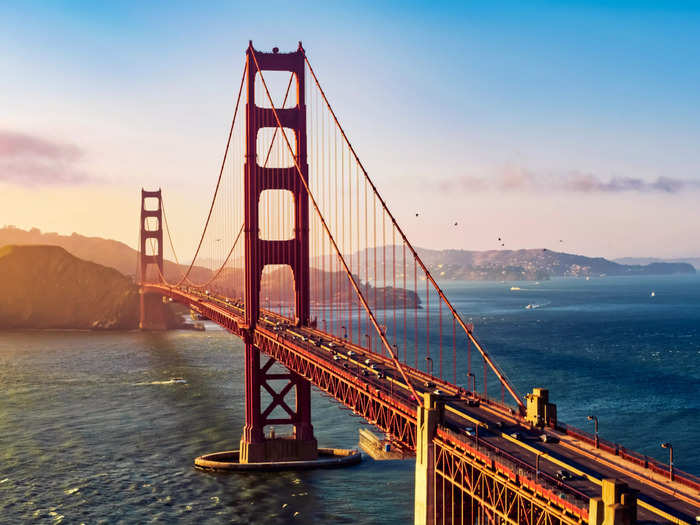
You might not always see it through San Francisco's famous fog, but the now-famous hue was inspired by the red primer used for the bridge's steel beams and was officially selected by consulting architect Irving Morrow. The particular color is custom-made, according to Sherwin-Williams.
And if you're wondering, NPR reported in 2011 that it takes between 5,000 and 10,000 gallons of paint to annually retouch the bridge's 10 million square feet of steel.
Before London's Tower Bridge was built in 1894, pedestrians had to cross the Thames river via tunnel.
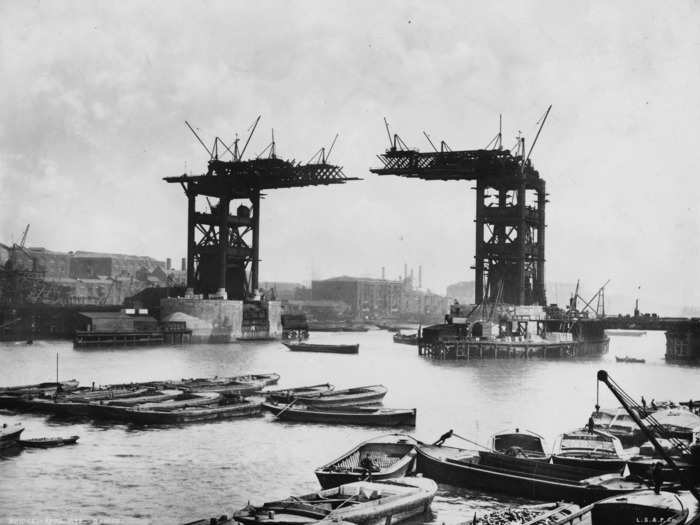
It took 432 construction workers eight years — and 31,000,000 bricks — to build Tower Bridge, The Telegraph reported. The Prince of Wales (the future King Edward VII) and his wife officially opened the bridge at a ceremony held in June 1894.
Before the bridge's completion, one million people relied on the Tower Subway, a 410-meter (1,345-foot) tunnel, to cross the Thames each year.
Today, more than 40,000 people cross the bridge every day.
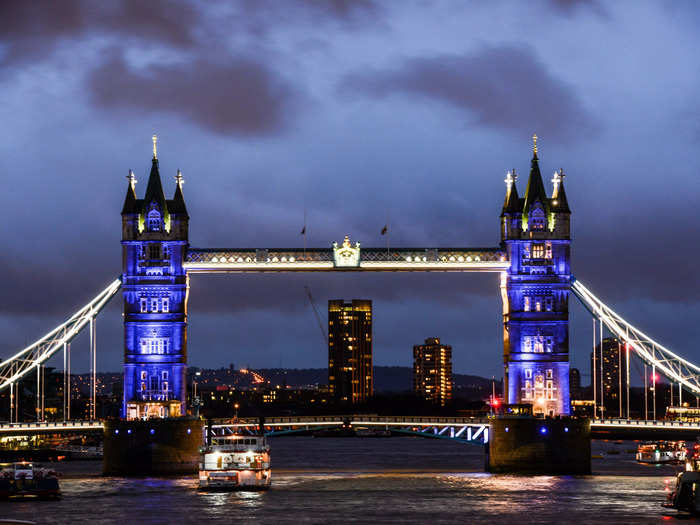
The bridge's open-air walkways were closed between 1910 and 1982 because they were frequented by sex workers and pickpockets. In 1982, the walkways were reopened in honor of the Tower Bridge Exhibition, a permanent exhibit about the bridge's history on display in its twin towers, according to Londontopia.
The construction of Barcelona's Sagrada Família, designed by Antoni Gaudí, began in 1882 — and it's still not done.
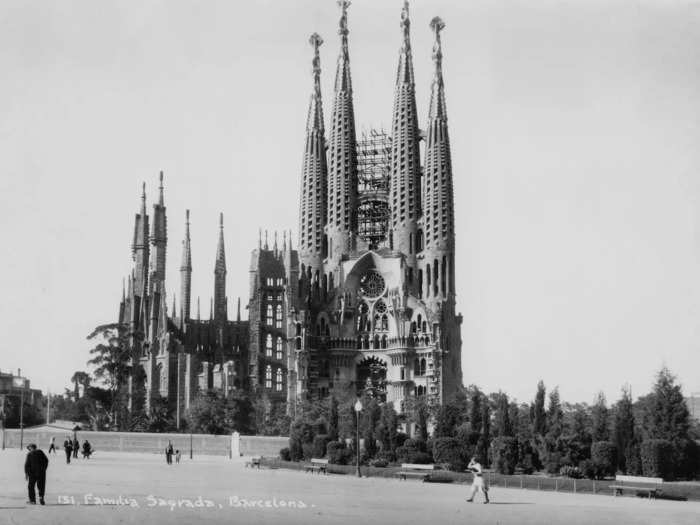
Famed Catalan architect Antoni Gaudí worked on the awe-inspiring Gothic and Byzantine-influenced cathedral from 1883 until his death in 1926. By then he had only completed a quarter of the building. Construction started under architect Francisco Paula de Villar in 1882.
It is expected to be completed by 2026, just in time for the 100th anniversary of Gaudí's death.
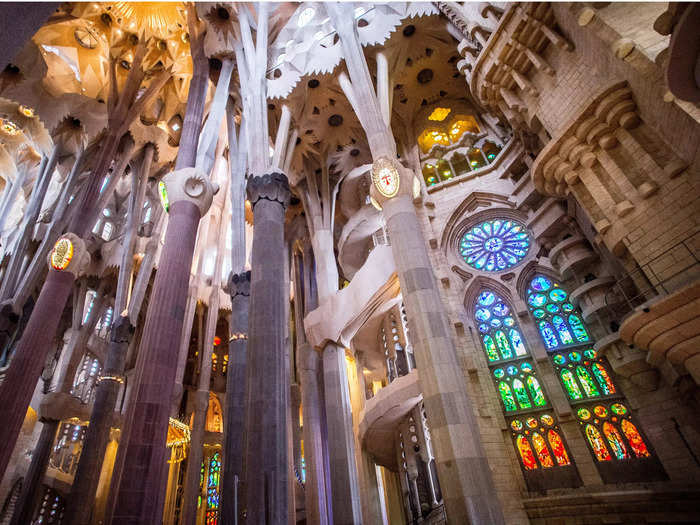
Despite a string of collaborators who picked up where Gaudí left off, the Sagrada Família remains under construction due to its intricate design and disruptions caused by the Spanish Civil War.
According to current chief architect Jordi Fauli, the building reached its final stage of construction in 2015, The Atlantic reported. While the cathedral is expected to be completed by 2026, for the 100th anniversary of Gaudí's death, it might take some additional time to add the final decorative elements.
The Gateway of India in Mumbai, constructed to commemorate the visit of King George V and Queen Mary, was completed in 1924.
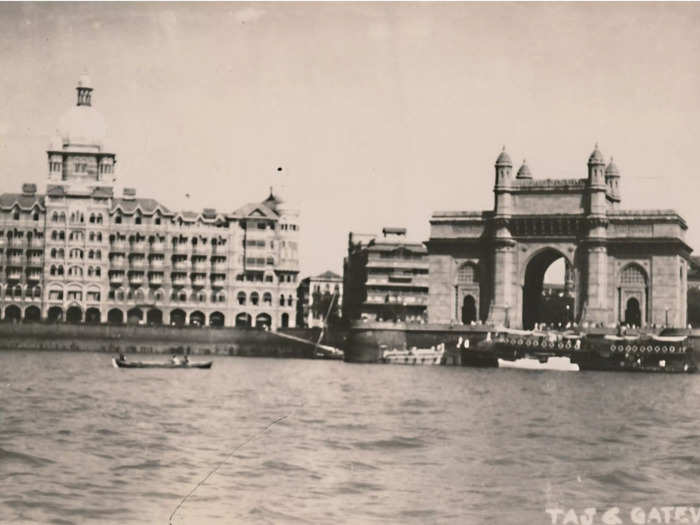
When the British royals arrived in Mumbai — then called Bombay — to be officially instated as the Emperor and Empress of India, the monument had yet to be completed. Instead, they were shown a cardboard model.
Built in the Indo-Saracenic style by Scottish architect George Wittet, the Gateway — which overlooks the Mumbai harbor — features a dome that soars 83 feet high, according to Mumbai.org.
Today, the Gateway of India is a major tourist attraction.
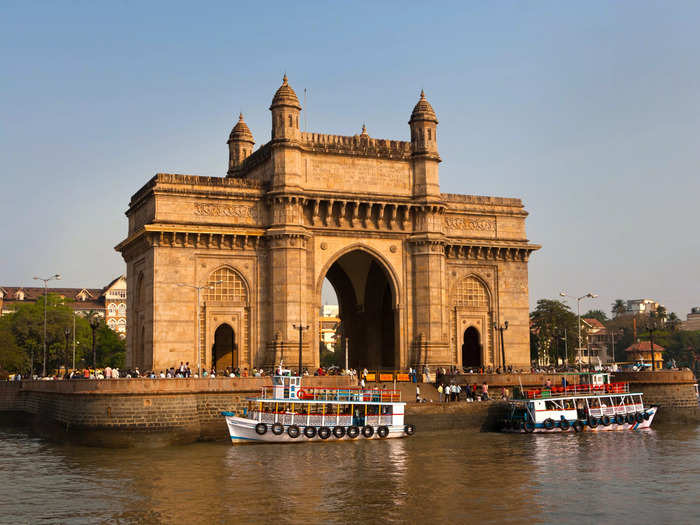
The massive structure is the first sight that greets visitors who enter Mumbai by sea. For that reason, it's often referred to as the "Taj Mahal of Mumbai." The real Taj Mahal is located in northern India in the city of Agra.
Erected in 1936, the Obelisco de Buenos Aires was built to celebrate the 400th anniversary of the first founding of the city.
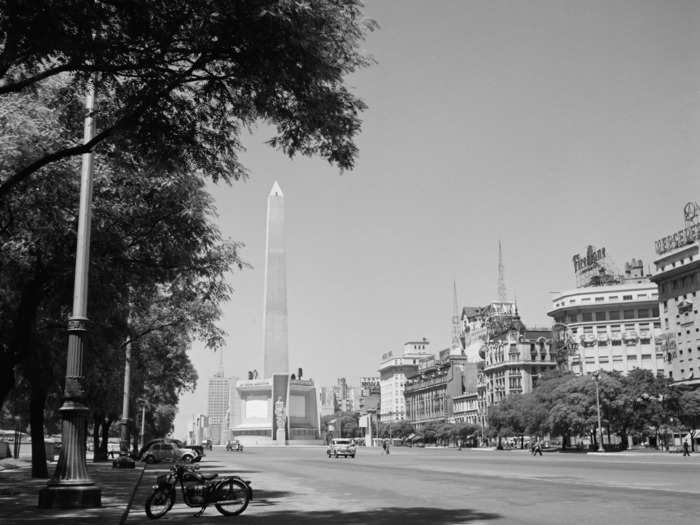
Although Buenos Aires was reestablished in 1580, the Obelisco was constructed to commemorate the 400th anniversary of the first (albeit unsuccessful) founding of the city by the Spanish explorer Pedro de Mendoza, according to Britannica.
Despite initial criticism and controversy surrounding the monument — such as it being erroneously blamed for the destruction of a historic church — Argentinians have come to embrace the so-called "silver sword," which stands 221.5 feet tall.
Situated in Buenos Aires' theater district at the intersection of two major thoroughfares, the monument is a popular gathering place for national celebrations.

From Argentine soccer fans congregating to cheer on their nation's team to festivals focused on the art of tango or artisanal ice cream, the Obelisco has seen it all.
Mount Rushmore's symbolic tribute to US presidents George Washington, Thomas Jefferson, Theodore Roosevelt, and Abraham Lincoln was seen as both patriotic and controversial.
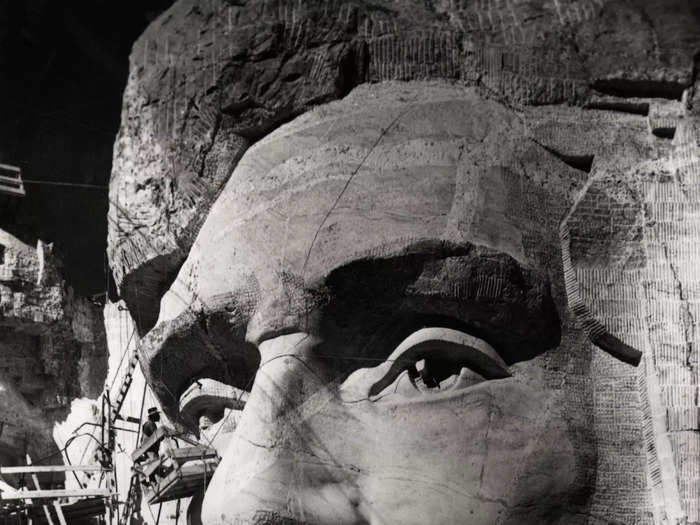
Initially, the idea for the faces on Mount Rushmore was Doane Robinson's, a South Dakota historian. He enlisted the help of a controversial sculptor (with ties to the Ku Klux Klan) named Gutzon Borglum, according to Smithsonian magazine.
From the get-go, it was vehemently opposed by the Native people in South Dakota. The Black Hills of South Dakota, where the monument is located, belonged to the Great Sioux Reservation and the Lakota Sioux people before the US government seized the land, and the mountain in question had been a sacred location for them.
The project took years to garner enough support and eventual funding — mostly from the federal government — before getting underway. It would cost $1 million.
It took 400 workers 14 years to complete Mount Rushmore, and it was finished on October 31, 1941.
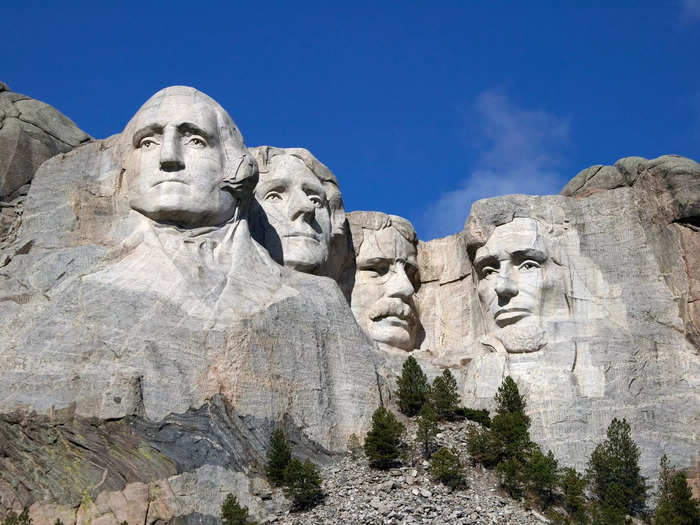
Sculpted into the southeastern face of the Black Hills mountainside, each 60-foot-high face was meant to represent a different aspect of America's democracy and exceptionalism.
First, George Washington was associated with the birth of US democracy. Next, Thomas Jefferson symbolized US expansion with the integration of land from the Louisiana Purchase. Then, Theodore Roosevelt was representative of America's economic prosperity and last, America commemorated Abraham Lincoln's role in saving the nation from collapse following the Civil War, according to National Geographic.
Nowadays, the patriotic memorial rakes in tourists by the millions.
Situated between 33rd and 34th streets on Fifth Avenue in Manhattan, New York, the Empire State Building was the world's first building to exceed 100 stories.
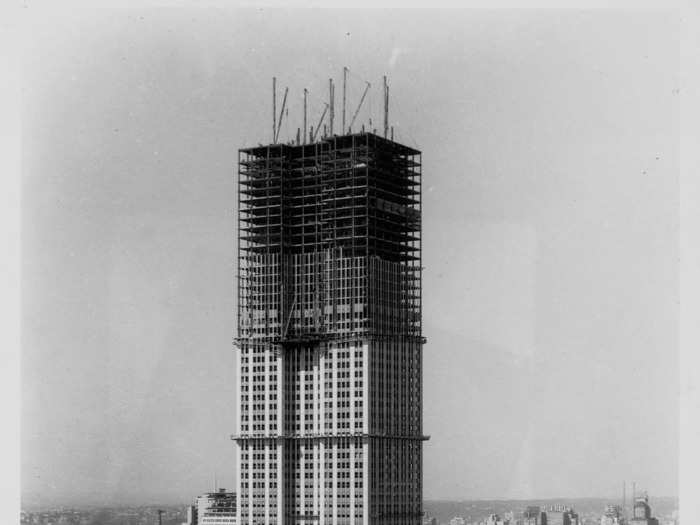
In 1928, what was the Waldorf Astoria Hotel on Fifth Avenue was acquired by the Bethlehem Engineering Corporation. The building was torn down to make way for what would become the Empire State Building.
On March 17, 1930, 3,000 workers set to work on the 103-story project. It took just one year and 45 days to complete, meaning they built 4.5 floors every week, CNN reported.
It officially opened in April 1931. Then-President Herbert Hoover illuminated the building by pressing a button — all the way from Washington, DC.
The Empire State Building, an icon of New York City, is the most photographed building in the world.
The Empire State Building has been recognized as a national historic landmark since 1986. It has been the tallest building in New York City twice — once, upon completion in 1931 until 1971 when the World Trade Center was built, and then again following its collapse in 2001 and until the new One World Trade Center was constructed in 2012, CNN reported.
On a clear day, the two observation decks allow for sights up to 80 miles away. Many movies have also featured the iconic building, from "An Affair to Remember" and "King Kong" to "Superman II" and "Elf."
Today, the popular tourist spot sees more than 4 million visitors every year, according to its official website.
Initially known as the Boulder Dam during its five-year construction, Hoover Dam would become the highest dam in the world at the time.
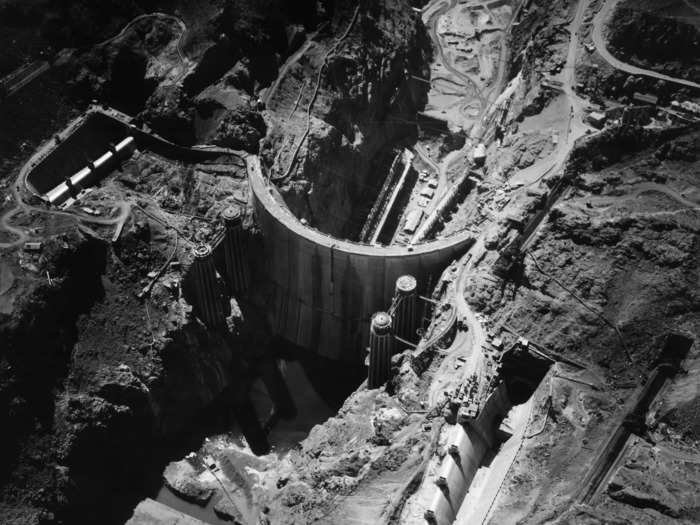
During the Great Depression, it fell upon the US Bureau of Reclamation to come up with a solution to provide flood control and distribute water from the Colorado River through the Southwest.
Then-Secretary of Commerce Herbert Hoover would play a pivotal role in the 1920s in seeing what was called the "Boulder Canyon project" forward so that construction would begin during his administration. It would be named officially after President Herbert Hoover in 1947, according to Britannica.
In July 1930, 21,000 men set to work in the Black Canyon of the Colorado River on what would be the height of a 60-story building, as dense and long as two football fields, and able to manage the quantity of water that pours over Niagara Falls, according to the National Park Service.
Hoover Dam holds the US' largest man-made lake by volume, when full.
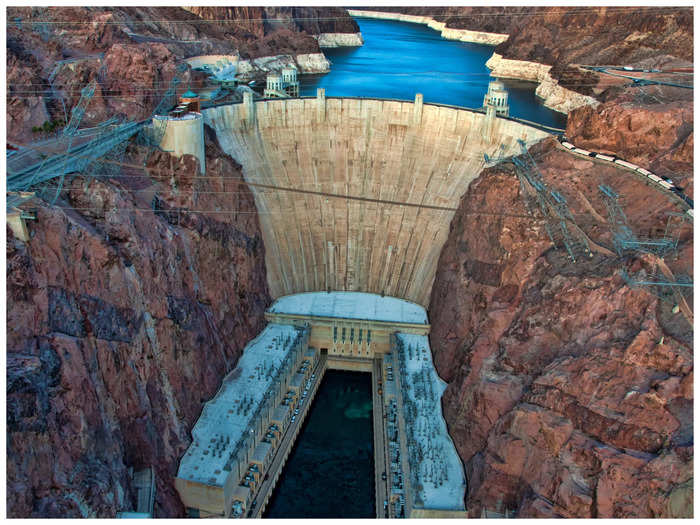
Hoover Dam cost $49 million in 1930, which is an estimated $900 million today. The power plant and generators were another $71 million, or $1.3 billion today. However, by 1987, the dam was paid back in full, according to The Hoover Presidential Library.
The Hoover Dam has allowed for the establishment of major cities across California, Arizona, and Nevada. It can irrigate up to 2 million acres and fuel 1.3 million homes with its 17 turbines. Recognized as a national historic landmark in 1985, it receives seven million visitors every year, according to its official website.
The famous Hollywood Sign in Los Angeles was built in 1923 as an advertisement for a forthcoming real estate development.
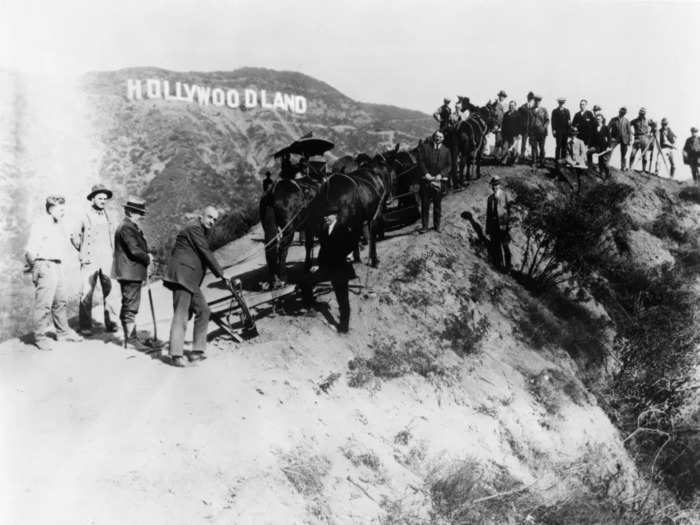
Los Angeles Times publisher Harry Chandler spent $21,000 on a billboard to draw residents to his housing development called "Hollywoodland," according to the Hollywood Sign's official website.
The sign was only supposed to be on display for 18 months, but it outlasted the Hollywoodland real estate development it once advertised that shuttered in the 1940s.
The Hollywood Sign became an official landmark in 1973, but was in desperate need of repairs.
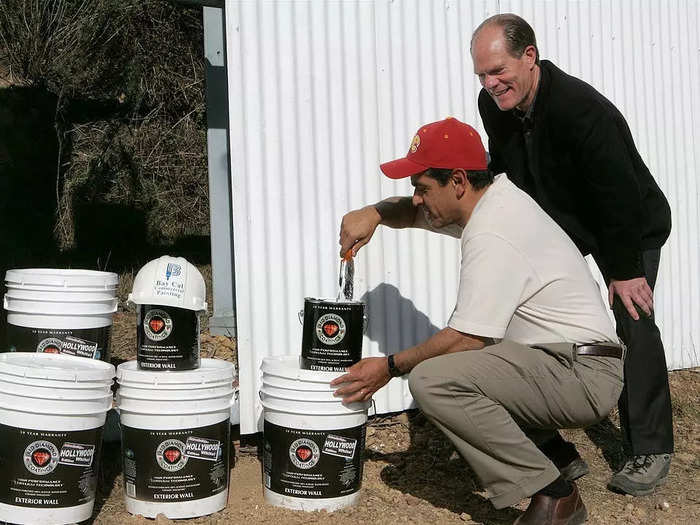
By the late 1970s, the Hollywood Sign was in need of $250,000 worth of repairs, or around $1.2 million in today's dollars, according to the site's official website. Hugh Hefner hosted a fundraiser at the Playboy Mansion in 1978 where celebrities pledged to sponsor the replacement of individual letters for $27,700 each. His efforts were successful, and the Hollywood Sign was completely rebuilt that same year.
The landmark was upgraded with new security measures in 2000 and a fresh coat of paint in 2005.
The Hollywood Sign celebrated its 100th anniversary in 2023.
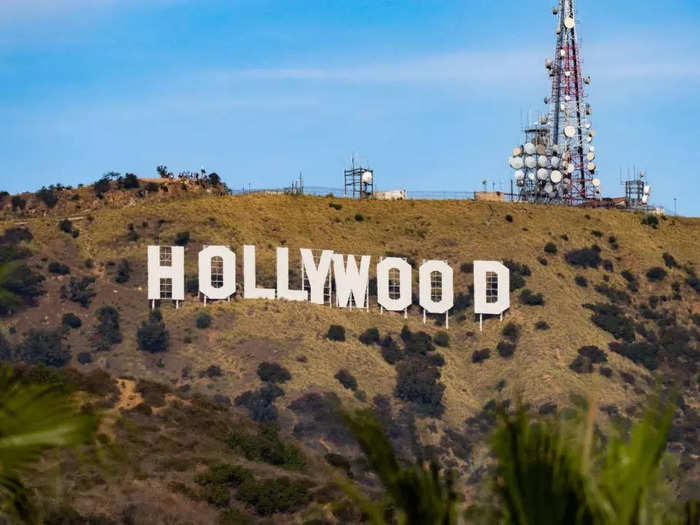
The sign remains an instantly recognizable landmark celebrating Hollywood's history and ongoing role in the entertainment industry. Nearly 50 million people visit the Hollywood Sign every year, according to the Hollywood Chamber of Commerce.
Popular Right Now
Popular Keywords
Advertisement